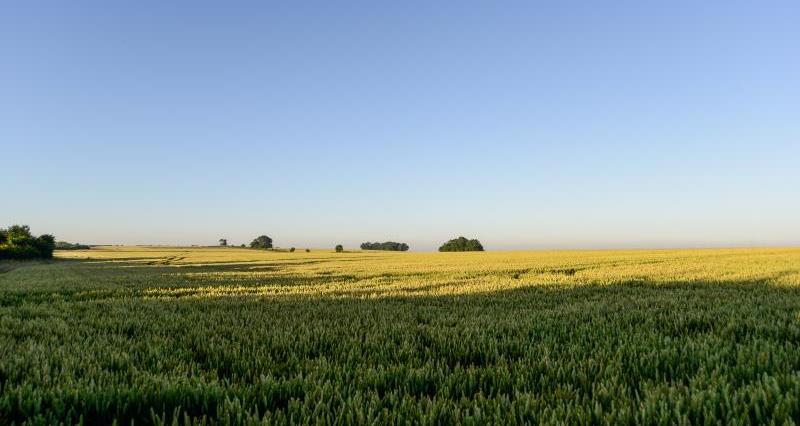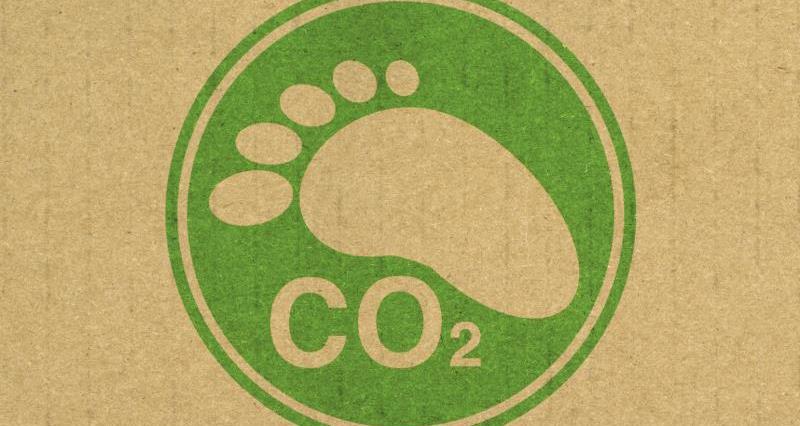A recently released analysis of YEN Zero data across the two years shows that crops with low greenhouse gas emissions tend to have:
- High yields (especially important when measuring emissions per tonne)
- Low rates of artificial fertiliser
- Greater use for fertiliser efficiency products (e.g. inhibitors)
- Less intensive cultivations
The greenhouse gas emissions measured for a particular crop vary considerably depending on the different management practices, soil types and weather conditions. As a general rule, a cereal and oilseed rape crop will attribute half of its greenhouse gas emissions to artificial fertiliser and 20% to operations, whilst a pulse crop’s biggest source of emissions is operations, followed by the decomposition of crop residues.
What is YEN Zero?
YEN Zero, a network in the Yield Enhancement Network (YEN) family led by ADAS, was founded in 2021 to help support agriculture's journey to net zero, and focuses on the analysis and benchmarking of carbon footprints for combinable crops.
YEN Zero calculates and benchmarks growers’ crop emissions footprint on a field basis, helping identify hotspots and possible mitigation strategies.
As a sponsor, the NFU has been sharing crop information of participating members to allow emission calculations to be benchmarked against peers, helping identify focus areas and gaining knowledge on greenhouse gas mitigation strategies which can be employed on farm.
By trialling and exploring which mitigation strategies work best, YEN Zero is helping farmers work towards the NFU ambition of achieving net-zero emissions by 2040.
Strategies for reducing crop carbon footprint
There are a multitude of mitigation strategies that can be implemented to reduce crop carbon footprints. In an analysis of the data from YEN Zero winter wheat feed crops, it was demonstrated that when these strategies are combined the total carbon footprint can be reduced by up to 41%.
This can be achieved by combining a reduced cultivation strategy, a low grain drying requirement, reduced synthetic fertiliser input, and use of urease and nitrification inhibitors.
Using the average carbon footprint of winter wheat feed crops of 2,336 kg CO2e/ha, it was shown that moving from a plough-based system to a direct drill cultivation system can reduce the carbon footprint by 9%.
Additionally, moving from a requirement to reduce grain moisture content by 3% to harvesting grain with no requirement for drying can result in a carbon footprint reduction of 11%, indicating the significant impact drying can have on the crop carbon footprint. Average total nitrogen application rates for the growers in the highest third of GHG intensities were 212 kg N/ha compared to 165 kg N/ha on average for the bottom third, with no difference in average yield. When solely considering fertiliser manufacture emissions, this reduction in N fertiliser use can contribute to a 9% reduction in the total C footprint.
It is no surprise that the lower emitting crops are the ones which follow a break crop, reducing the nutrient requirement for that year. The YEN Zero programme plans to analyse data over a whole rotation as the data available builds, but at the moment information is recorded on an annual basis. This can make a crop’s footprint look worse in a year when P & K fertilisers are applied, and better in a year where they have been applied elsewhere in the rotation.
Unsurprisingly, grain drying does play a large role in the greenhouse gas emissions of a crop.
Organic vs artificial
Whilst artificial fertiliser is recorded as one of the biggest sources of greenhouse gas emissions, it is important to consider that organic materials also have an environmental footprint.
Whilst organic materials improve soil organic matter and soil fertility for future crops in the rotation, a compete switch from artificial to organic fertiliser will not completely eliminate emissions from fertiliser. The easiest way to reduce this impact is to balance the organic material application rate with crop nutrient requirements and apply manures carefully to reduce ammonia losses and maximise crop access.
Check the metrics
Some crops vary in their greenhouse gas emissions in comparison to other crops depending on whether the output is measured per hectare or per tonne. For example, on a per hectare basis the nitrogen fixing crops (peas and beans) stand alone with substantially lower emissions compared to cereals and oilseeds, but on a per tonne basis maize and rye move from being some of the highest emitters per hectare to join the pulses in being at the lower end of the scale.
Linseed also varies substantially, increasing from relatively low emissions per hectare to join oilseed rape at the highest emissions per tonne.
Carbon calculators
Programmes such as YEN Zero are working to identify how farm businesses can be more efficient, effective and resilient in the modern world.
As part of this, all farm businesses can look to identify their emissions starting point and focus areas to improve the utilisation of their resources by completing a carbon calculation.
Looking to the future
The discussion workshops which are held at the end of each year have identified some focus areas to work towards reaching net zero:
- Reduce fuel use by decreasing cultivation intensity without reducing yield
- Improve fertiliser use efficiency
- Make use of cover crops, manures and digestate
The group also highlighted opportunities for progress to be made with support from the wider industry:
- Relaxation of the high protein requirement of milling wheat
- Breeding advances such as gene editing
- Alternative fuels and fertilisers
The NFU is continuing to sponsor the YEN Zero programme, and is looking forward to seeing advances in the data reported on as part of the network.
A summer containing wetter weather will allow for more data to be collected on the impact of grain drying, whilst an increase in urease inhibitors ahead of the introduction of Option 4 should allow for a better understanding of any improvements in fertiliser efficiency.
Read more about fertiliser



